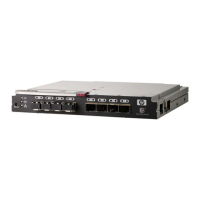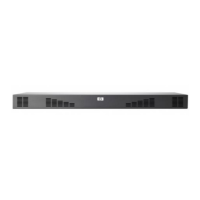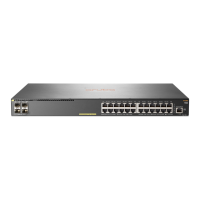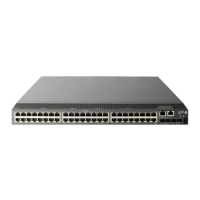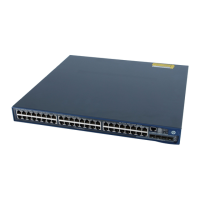18
NOTE:
• When you switch the operating mode, the switch automatically reboots to make the change effective.
• If the member ID of the switch is not set, you must first set the member ID for the switch, and then execute
the chassis convert mode irf command. To display the member ID of the switch, use the display irf
configuration command. If the MemberID field is displayed as —, the member ID of the switch is not se
yet.
• To switch the operating mode of the switch to standalone mode, use the undo chassis convert mode irf
command.
Accessing an IRF fabric
Accessing the active MPU of an IRF fabric
Access an IRF fabric in one of the following ways:
• Local login—Log in through the console port of a member switch.
• Remote login—Remotely log in at a Layer 3 interface on any member switch through Telnet or
SNMP.
When you log in to an IRF fabric, you are placed at the CLI of its active MPU, regardless of at which
member switch you are logged in. The active MPU of the IRF fabric is the configuration and control center
of the IRF fabric. You make configuration for the IRF fabric on the active MPU, and the IRF fabric
synchronizes the configurations to all standby MPUs in the IRF fabric.
Accessing a standby MPU of an IRF fabric
You can log in to the CLI of a standby MPU of the IRF fabric to display its configurations and debug the
standby MPU. When you switch from the active MPU’s CLI to the standby MPU’s CLI, you are placed in
the user view of the standby MPU and the command prompt changes to
<Sysname-Slave#member-ID/slot-number>, for example, <Sysname-Slave#1/0>. You can perform the
following commands at the CLI of the standby MPU of an IRF fabric:
• display
• quit
• return
• system-view
• debugging
• terminal debugging
• terminal logging
• terminal monitor
• terminal trapping
To return to the CLI of the active MPU of the IRF fabric, use the quit command.
Follow these steps to log in to the CLI of a standby MPU in the IRF fabric:
To do… Use the command…
Remarks
Enter system view system-view —

